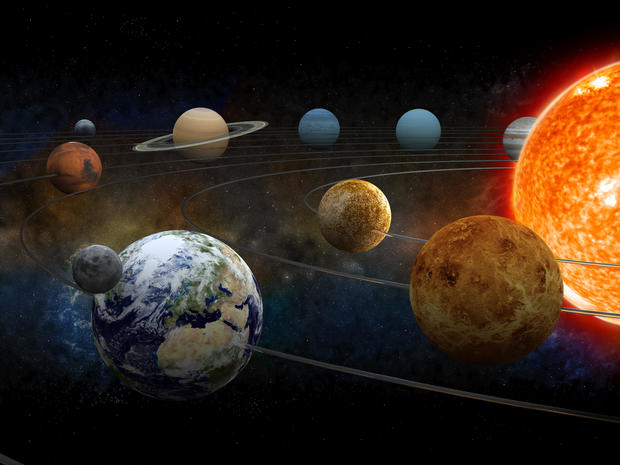How to watch a rare 5-planet alignment this weekend
Five planets will align on June 17 in a rare astronomical event. The planetary alignment will include Saturn, Neptune, Jupiter, Uranus and Mercury.
The planets will rise slowly throughout the night, with different planets visible at different times, according to the astronomy guide app Star Walk.
Here's how to see the planets.
What is a planetary alignment?
A planetary alignment actually has two definitions, according to Star Walk. When planets gather on one side of the sun at the same time, that's a planetary alignment. The term can also apply when planets appear close together, as seen from Earth, in a small section of the sky.
The planets will form a line, but not necessarily a straight one, because planets operate on different elliptical orbits. From some angles, they may appear to be in a straight line.
When is the June 2023 planetary alignment?
The alignment will be best visible on the night of June 16 until the morning of June 17. The best time to see all five planets in the sky will be an hour before sunrise, Star Walk said.
The alignment may be visible for a few days before and after the 16th, depending on where you are in the world.
The alignment will start with Saturn, which will rise in the middle of the night near the constellation Aquarius. Neptune will be next, followed by Jupiter appearing in the Aries constellation. Uranus will appear after that, near Jupiter but a few degrees lower. The final planet to rise will be Mercury, which will be low on the horizon and visible an hour before sunrise.
What's the best way to watch the five planets align?
Three of the planets — Jupiter, Mercury and Saturn — will be bright and visible with the naked eye. However, the remaining two planets, Neptune and Uranus, will require at least a pair of binoculars, according to Star Walk.
It can also help to download an app that explores the night sky and can provide direction about where to look for the alignment.
When you're watching the skies, make sure you know what to look at: According to Star Walk, stars will twinkle, but planets won't. Jupiter will be the brightest object in the sky until the sun rises, but the other planets will be fainter, so it will be harder to tell them apart from stars.
Will there be more planetary alignments in 2023?
There was already one five-planet alignment this year, in March. Jupiter, Mercury, Venus, Uranus and Mars appeared in the night sky after sunset late in the month. The best day to see the event was March 28.
There will be another alignment later in the summer, according to Star Walk. That alignment will take place in July and be best visible on July 22. It will feature just three planets, with Mars, Venus and Mercury appearing in the evening sky.
The next planetary alignment with five or more planets won't be until April 2024, according to Star Walk.
